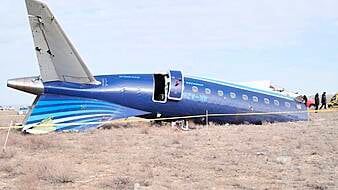These flying reptiles first emerged more than 200 million years ago and dominated the skies for at least 100 million years.
Some large-sized creatures are thought to have weighed more than 200kg and had wing spans of 10 metres or more – about the size of a small aeroplane like a Spitfire.
It was previously thought pterosaurs used large, well-developed eyes to spot prey before capturing it using their jaws or spearing it with sharp beaks.
But scientists from the universities of Portsmouth and Bath now believe some pterosaur species may have used the sensitive tip of their beak to hunt for food, just like modern-day ducks, sandpipers and kiwis.
Their findings are published in the journal Cretaceous Research.
This species apparently used the sensitive beak to find prey by touch - feeding on the ground and probing around in shallow water like a dabbling duck or spoonbill, perhaps even feeding at night
Lead author Professor David Martill, from the University of Portsmouth who restudied the animal at the Natural History Museum in London, said: “This new find hints that, like birds, the pterosaurs evolved a huge range of feeding strategies – including ways of finding their prey.
“Many pterosaurs would have used their sharp eyes to pick out prey on the wing, while stalking it on the ground.
“But this species apparently used the sensitive beak to find prey by touch – feeding on the ground and probing around in shallow water like a dabbling duck or spoonbill, perhaps even feeding at night.
“These animals could probably detect a fish in the muddiest of water.”
The researchers analysed the fossil of the pterosaur species known as Lonchodraco giganteus, which was found in a chalk pit near Kent.
They found dozens of tiny holes in the tip of the beak, which the scientists believe, is where clusters of nerves passed through the bone.
A similar feature can be seen in the beaks of modern-day birds such as kiwis, sandpipers, snipes and spoonbills, ducks and geese, as well as ostriches, who rely on their sense of touch when hunting for food.
The nerves send electrical signals to the brain that allow these birds to sense prey in water as well as mud.
Pterosaurs clearly evolved a huge range of feeding habits, and rare finds like Lonchodraco hint at that.
Study co-author Roy Smith, a PhD student at the University of Portsmouth, said: “I had always thought that pterosaurs found their prey using their excellent eyesight, but it seems they had other acute senses too.
“This study is particularly fascinating because it does suggest that some species of pterosaur could have been nocturnal, like bats today.”
Dr Nick Longrich, from the University of Bath, who is also an author on the paper, added: “We often picture pterosaurs hunting on the wing and grabbing fish, like modern seagulls.
“Many probably did, but fossils give us a biased picture.
“Since most of the pterosaur fossils are from lakes, lagoons and seas, we find a lot of the pterosaurs that hunt over water.”
He added: “Pterosaurs clearly evolved a huge range of feeding habits, and rare finds like Lonchodraco hint at that.”







